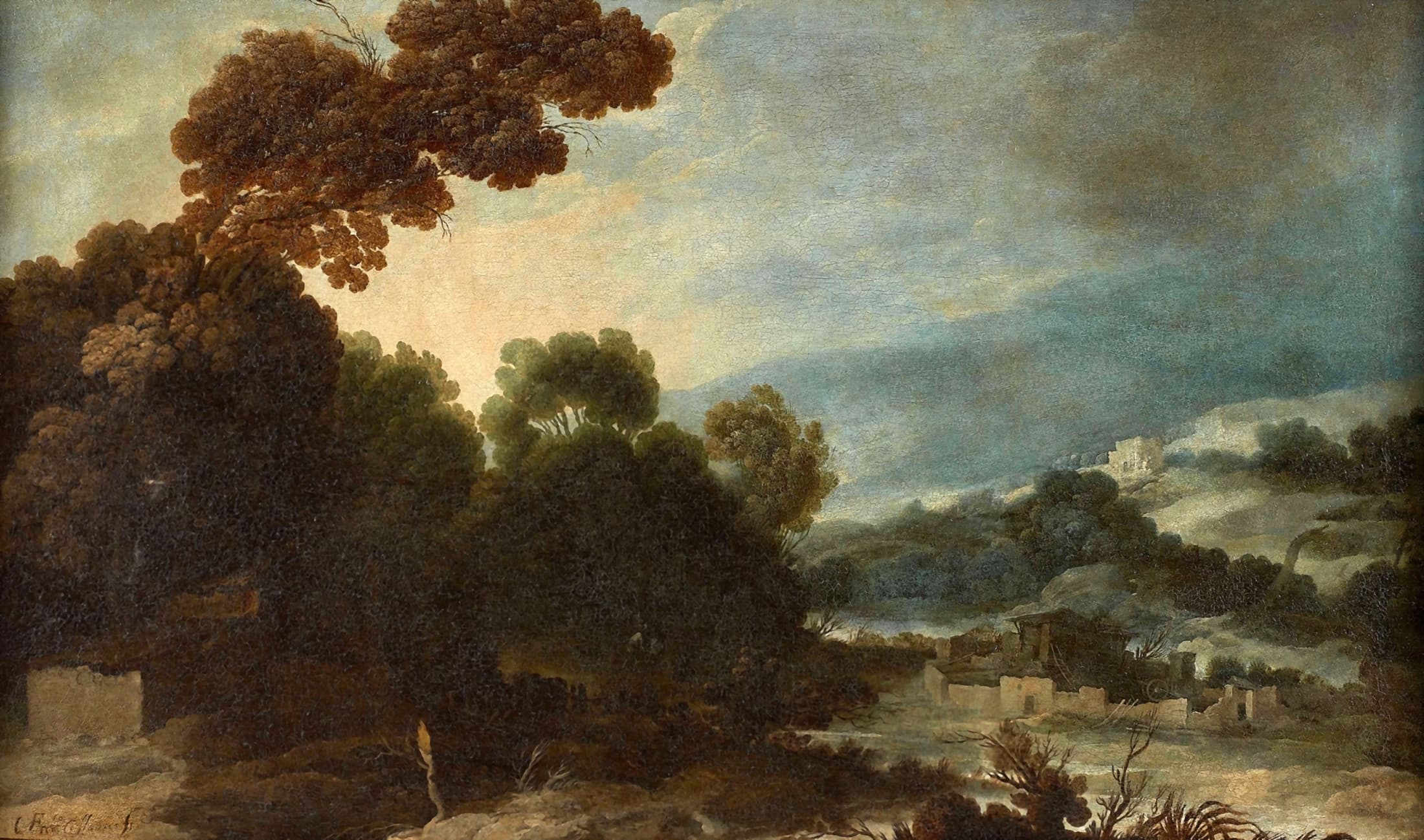Little is known about the life of the Spanish baroque painter Francisco Collantes. In fact, only the minimal information provided by Antonio Palomino and Lázaro Díaz del Valle in a short biography dated 1657 is available to retrace his career. Collantes was already referred to in it as “an excellent painter and especially in his landscapes”.
According to Palomino, he was a pupil of the Florentine painter based in Madrid, Vincenzo Carducci or (Carducho) who passed on the academic aesthetic standards established according to the Carraccis’ teachings. His familiarity with contemporary Italian art indicates that he may have spent time in Rome and Naples. The influence of José de Ribera is also visible, especially in the religious compositions. Collantes’ biographers mention that he also made some still life paintings (1).
Today, about fifteen paintings are attributed to him with certainty, which, unusually for Spain at that time, are mostly landscapes. In fact he is considered to be the best representative of a type of landscape that originated in Flanders and was created with luminous planes that he animated with little figures inspired by Neapolitan or Venetian compositions. The painting we are presenting here is typical of this.
Having achieved great fame around 1635, he created a series of paintings for the Buen Retiro palace. Now dispersed, they show biblical and mythological motifs. He also received many private commissions. In this respect, it should be noted that he was one of the few artists whose fame reached beyond the borders of Spain. Louis XIV, an enlightened connoisseur, acquired one of his paintings for his collection, which is now exhibited at the Louvre (2). It is, far as I am aware, the only painting, with the Arrival at Bethlehem (3), now in a French collection.
Hard to place in a chronology and rarely dated, this painting, exceptionally, is signed. It shows all the characteristics of the paintings of the artist’s maturity: balance in the composition, skill in depicting the architecture, use of contrasting light and shade. These qualities doubtless contributed to raising him to the level of his exact contemporary, Velasquez.
Lastly, an article written in 1813 about the “Spanish Poussin”, as he was called, should be cited. It shows the singularity of his talent and his continued prestige at that time: “Palomino Velasco says he composed with great ease. His paintings are full of meaning and movement; the groups, the figures, the sites are as varied as they are in nature. The painting in which he has shown St. Jerome is entirely in the style of Spagnoletto, but the work which has marked Collantes’ place among the most distinguished artists of Spain is the one that can be seen at the palace of Buen Retiro and which shows the Resurrection.” (4)
(1) Angulo Íñiguez et Pérez Sánchez, Alfonso E. Pintura madrileña del segundo tercio del siglo XVII , 1983, Madrid (Instituto Diego Velázquez)
(2) The Burning Bush” – Oil on canvas – – 116 x 163 cm (Musée du Louvre, Inv. 924)
(3) “Arrival at Bethlehem”- Oil on canvas – 45 x 56 (Musée du Louvre, MNR 330) (4) Biographie Universelle et Moderne, Joseph et Louis Gabriel MICHAUD, 1813


